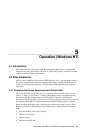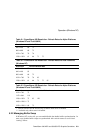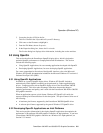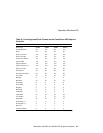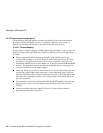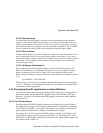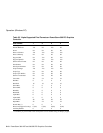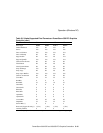
Operation (Windows NT)
5–8 PowerStorm 300 AGP and 300/350 PCI Graphics Controllers
5.3.2.2 Performance Considerations
The PowerStorm 300 AGP graphics controller and display driver on the Intel platform
accelerate virtually all OpenGL Version 1.1 operations. However, some aspects of
OpenGL use can affect performance as described in the following sections.
5.3.2.2.1 Texture Mapping
Several aspects of texture mapping can affect application performance. Some of these are
under the control of the application user. Others are under the control of the application
developer:
When an application defines textures to OpenGL, it can explicitly specify the
resolution (for example, 16 or 32 bits per texel) with which textures are to be stored.
Alternatively, the application can leave this decision to OpenGL. In this case, the
PowerStorm OpenGL driver will, by default, use 16 bits per texel for RGB and RGBA
textures. The application user can override this default behavior by setting the Texel
32 Bit Default selection in the Display Applet.
Allocating 16 bits per texel allows more textures to be stored in the texture cache and
may provide slightly higher rasterization rates. On the other hand, using 32 bits per
texel provides better texture resolution in the same way that a color frame buffer with
8 bits per color component has better color resolution than a frame buffer with 4 bits
per color component.
The rasterization rate for PowerStorm 300 AGP and 300 PCI graphics controllers and
display drivers is twice as fast for bilinear texture filtering as for trilinear texture
filtering.
Software developers should use OpenGL Version 1.1 texture objects when an
application has more than one texture.




